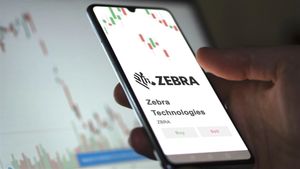NASHVILLE, Tenn., Oct. 24, 2022 (GLOBE NEWSWIRE) -- Low interest rates and high demand for homes propelled mortgage origination activity during the pandemic, only to slow dramatically in 2022 during an environment of higher home prices and interest rates. A new TransUnion (NYSE: TRU) study, “Where Will Growth in Mortgage Originations Come From?,” found that despite an overall decrease in the number of consumers actively seeking a mortgage, some consumer segments remain positioned as potential opportunities for lenders. The study was released today in conjunction with the Mortgage Bankers Association 2022 Annual Convention in Nashville.
TransUnion’s study analyzed the entire credit-active U.S. population between Q2 2017 and Q1 2022. It flagged consumers who were likely renters or homeowners and further identified consumers as belonging to LMI (Low-to-Moderate Income), Veterans Administration (VA)-eligible, and self-employed, non-exclusive segments. It then highlighted consumers in these segments who either withdrew their applications or were potentially turned down for a mortgage.
The study found that, despite the current low origination environment, there are a number of sizeable consumer segments with purchase origination potential. With affordability currently at a 30-year low, the ability to identify these segments allows lenders to tailor messaging around products that these consumer segments may qualify for (such as VA, LMI, and self-employed specific products) as well as down payment assistance programs they may be eligible for. The LMI, VA-eligible, and self-employed segments each carry a sizeable proportion of mortgage qualifying consumers.
Key findings include:
- 95% (116 million) of the ~121 million LMI consumers on-file are credit eligible for a mortgage
- Of the 10 million identifiable VA-eligible consumers, 86% (8.6 million) have credit scores above 620 and are mortgage eligible
- Of the six million identifiable self-employed consumers, 67% of renters (two million) and 93% of homeowners (four million) have a >620 credit score
In addition, the study showed that eight million current renters were turned down or otherwise withdrew their mortgage application, five million of whom would classify as LMI. The study also found that the percentage of consumers who are likely renters has grown 4% since Q2 2019, which represents a significant jump considering that segment only grew 1% between Q2 2017 and Q2 2019. Herein may lie another opportunity for lenders, as the number of likely renters with a credit risk score above 620, a score which may help them qualify for a government-sponsored enterprise mortgage, increased from 97 million to 100 million in Q2 2022.
“As each consumer has unique needs, it’s important to use insights tailored to the individual to help educate people on their journey to home ownership, whether that be information around the product and down payment assistance they qualify for or assistance to get mortgage-ready,” said Joe Mellman, senior vice president and mortgage business leader at TransUnion. “For consumers who were either turned down or withdrew their mortgage application, using a targeted solution such as TransUnion’s partner FinLocker, a financial fitness app that supports consumers through a step-by-step journey to become mortgage ready, consumers can improve their credit profile and put themselves in a better position to get into the market. This also means more customers for lenders.”
Tappable Home Equity Remains High Among Key Segments
The study showed that, as expected, the overall number of consumers securing a rate-and-term refinance dropped considerably across all consumer segments, from 21 million in Q4 2021 to three million in Q2 2022. However, the study also showed that the LMI, VA, and self-employed segments of the consumer population remained rife with available equity, as a sizable proportion of each consisted of mortgage carrying consumers.
Tappable1 equity of mortgage holders continued to grow as valuations continued to rise2
| Q2 2017 | Q2 2018 | Q2 2019 | Q2 2020 | Q2 2021 | Q2 2022 | |
| Valuations | $25.5T | $26.9T | $27.7T | $28.4T | $33.0T | $38.4T |
| Available Equity | $12T | $13T | $13T | $13T | $16T | $20T |
| 1. 80% of value of all residential properties less sum of mortgage and home equity balances; 2. Balances continue to rise too, however valuations have risen faster and more significantly. Source: TransUnion US consumer credit database | ||||||
Among LMI consumers, 21 million out of the 32 million homeowners have equity available in their homes. Of the identifiable VA-eligible population, 3.8 million have tappable home equity, as do three million of those consumers who are reported to be self-employed.
“In this low origination environment, it is critical for lenders to have the ability to identify how much equity each homeowner can tap into to generate uniquely customized messaging to address each consumer’s need. For example, with TransUnion solutions, lenders can identify specific consumers that can save money on high interest rate non-mortgage debt and educate them on how much those savings could mean on a monthly basis,” said Mellman. “Consumers are currently tapping into HELOCs and Home Equity Loans at a dramatically higher rate than last year. These products are an attractive option over cash-out refis because they allow consumers to use their available home equity while keeping their existing low interest rate mortgage.”
Mellman added that, in order to optimize returns on their marketing dollars, now is the time for lenders to leverage as much data and analytics as possible to focus outreach efforts on consumers that can most benefit from them. He also emphasized that consumers are more likely to react to targeted messages that address the value proposition relevant to their unique situation.
To learn more about the findings of the study and how lenders can better identify the right consumers to help grow originations, visit here. More information on how TransUnion Mortgage Propensity Model helps lenders identify consumers with a high likelihood of origination can be found here. For information on how consumers can best prepare their credit if they are in the market for a mortgage, visit here.
About TransUnion (NYSE: TRU)
TransUnion is a global information and insights company that makes trust possible in the modern economy. We do this by providing an actionable picture of each person so they can be reliably represented in the marketplace. As a result, businesses and consumers can transact with confidence and achieve great things. We call this Information for Good.® A leading presence in more than 30 countries across five continents, TransUnion provides solutions that help create economic opportunity, great experiences and personal empowerment for hundreds of millions of people.
http://www.transunion.com/business
| Contact | Dave Blumberg TransUnion | |
| david.blumberg@transunion.com | ||
| Telephone | 312-972-6646 | |






